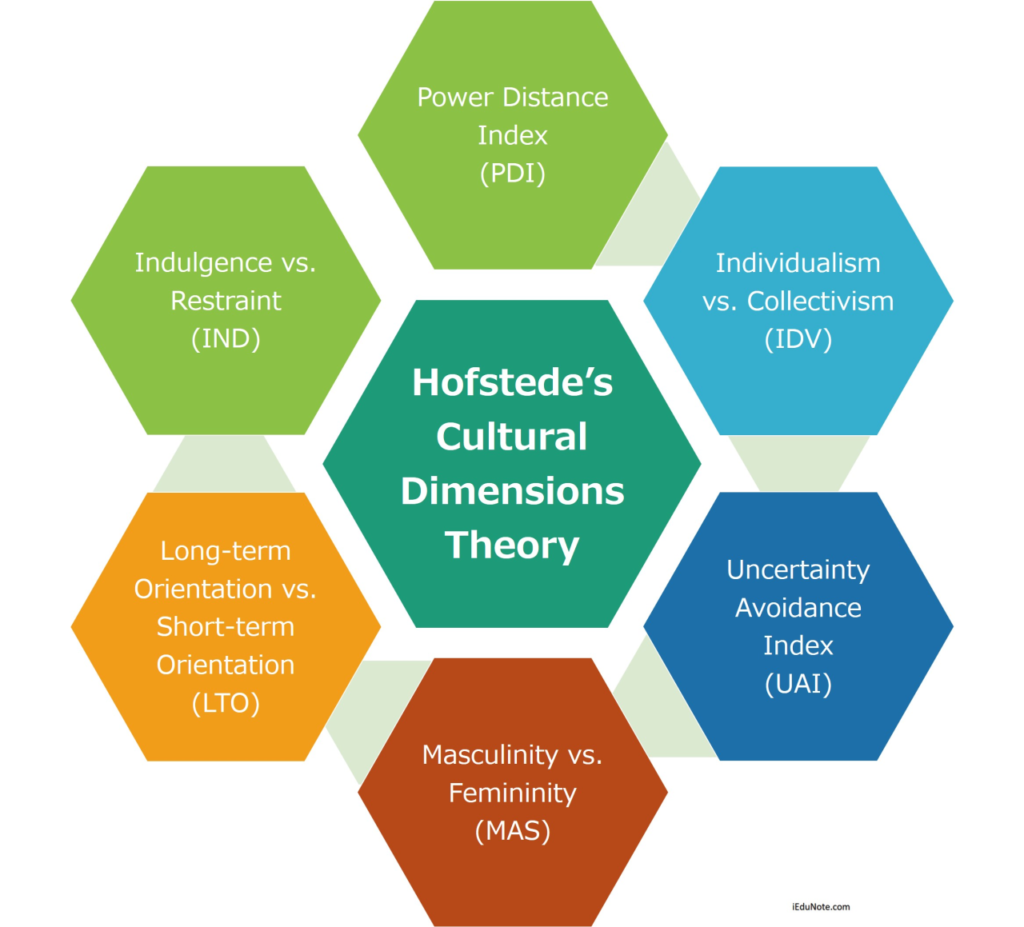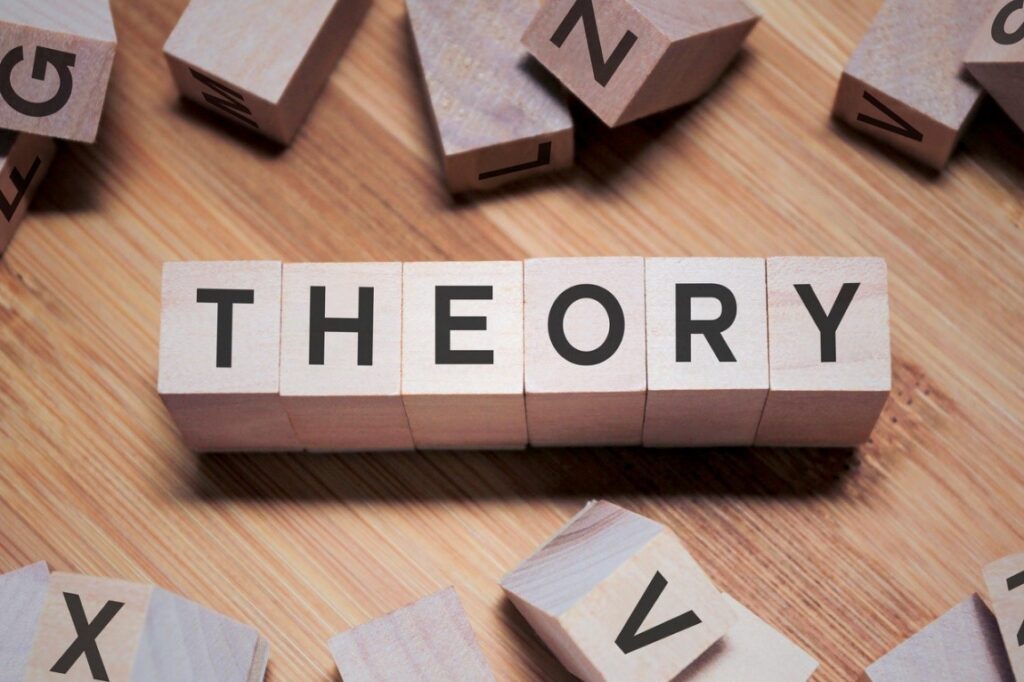Geert Hofstede’s is a cultural theorist who created a six dimensional model of culture that influence how an individual behaves. He started his work in the research department of IBM Europe where he used surveys to capture the wide ranging values of employees of the employees in the company as IBM had offices around the globe at this point. These six dimension make up his model of ‘mental programming’ that influence the way an individual thinks. This is more about the contextual factors that create the way of thinking in individuals through the national culture which they were raised in, rather than the culture of the organisation’s influence on changing behaviour – although these are interrelated. These dimensions are:
- Individualism v collectivism
- Power Distance
- Uncertainty avoidance
- Masculinity v femininity
- Long-term/short-term orientation
- Indulgence-restraint

Individualism vs. collectivism (IDV)
This dimension focuses on the “degree to which people in a society are integrated into groups”. Individualistic societies have loose ties that often only relate an individual to his/her immediate family. This more well-known dimension can be summarised with the “I” versus the “we”. In contrast, collectivism describes a society in which individuals are less emphasised and there are more tightly integrated groups that put more importance on family and relationships (in-groups). This can result in more loyalty and support for ‘in-groups, although this is a complicated multi-faceted issue.[1]
Power distance index (PDI)
The power distance dimension is defined as “the extent to which the less powerful members of organizations and institutions (like the family) accept and expect that power is distributed unequally”. This is focused on inequality and power and how it is perceived from the followers, or the lower levels of a system. A high score in the power distance index implies that hierarchy is important factor in the society and individuals follow the more senior individuals in a group with less critical evaluation. In contrast, a lower degree in this dimension signifies that people question authority and attempt to distribute power.[1]
Uncertainty avoidance index (UAI)
The uncertainty avoidance index is defined as “a society’s tolerance for ambiguity”, this is identified through the extent to which individuals either embrace or avert something unexpected or away from the status quo. If a society scores high here the individuals tend to avoid uncertainty which results in more strict codes of behaviour, guidelines, policies and laws. They also can rely on ‘absolute truth’ which dictates behaviour, this helps reduce uncertainty and make life less complex. A lower degree in this index shows more acceptance of differing thoughts or ideas. Society tends to impose fewer regulations, ambiguity is more accepted and therefore less uncomfortable to individuals who can deal with complexity more easily.[1]
Masculinity vs. femininity (MAS)
In this dimension, masculinity is defined as “a preference in society for achievement, heroism, assertiveness, and material rewards for success.” The feminine represents “a preference for cooperation, modesty, caring for the weak, and quality of life.” In this more ‘feminine’ society, women and men tend to share modest and caring views equally. In more masculine societies, women are also more assertive and competitive, but notably less than men. This implies that there is a gender difference between men and women, however this gap can change depending on the culture of the society, that means that the culture can enhance or decrease the masculinity or femininty of individuals.[1]
Long-term orientation vs. short-term orientation (LTO)
This dimension associates the connection of the past with the current and future actions/challenges. A short-term orientation in this dimension indicated that traditions are important and something that is highly valued. Societies with a high degree in this index (long-term) view adaptation and circumstantial, pragmatic problem-solving as a necessity. A poor country that is short-term oriented usually has little to no economic development, while long-term oriented countries continue to develop to a level of prosperity.[1]
Indulgence vs. restraint (IND)
This dimension refers to the amount of ‘freedom’ that is given to the citizens and that they have the ability to puruse their desires which is accepted in society. The definition of indulgence here is “a society that allows relatively free gratification of basic and natural human desires related to enjoying life and having fun”. The other end of the scale is defined as “a society that controls gratification of needs and regulates it by means of strict social norms”.[1]
For a deeper analysis read Hofstede’s book or read this useful link that summaries the pros and cons of each and has examples of what would constitutive a high or low example from each of the dimensions.
